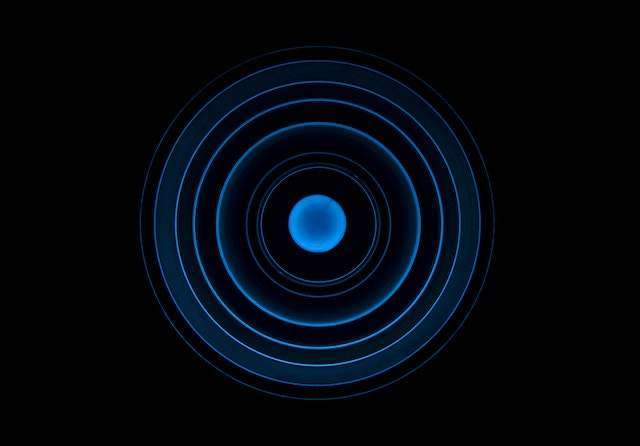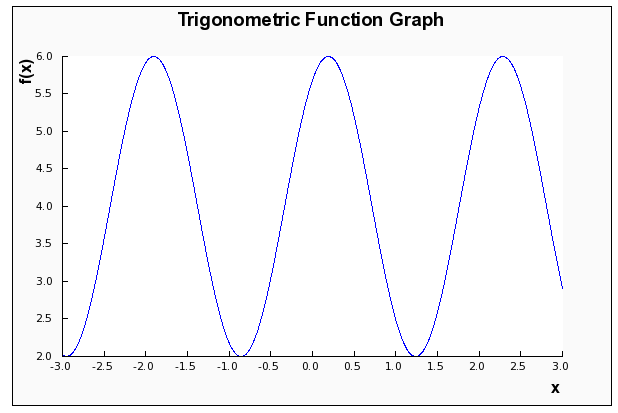Standard Form of a Circle
Instructions: Use this calculator to compute the standard form of the circle, showing all the steps. Please type in the radius of the circle as well as the coordinates of the center in the form below.
More on the standard form equation of a circle
This calculator will allow you to calculate the standard form of the equation of the circle, showing all the steps. You need to provide a valid expression for the radius and the coordinates of the center. They can be any valid expression, with the only restriction that the radius must be positive.
Once valid data are provided, you need to click on the "Calculate" button, and all the steps of the process will be shown to you on how the circle is put in standard form.
In general terms, computing the standard form is fairly straightforward when you know the radius and the center, as we will see in the following sections.

What is the standard form of a circle?
As it happens frequently in math, commonly used math objects can be expressed in different ways. For example, for lines we have the standard form of the line and the slope-intercept form. For circles, something similar happens. A circle is in standard form if it is expressed in the following form:
\[\displaystyle (x-x_0)^2 + (y-y_0)^2 = r^2 \]In this case, we know that \(r\) is the radius of the circle and \((x_0, y_0)\) is the center of the circle.
What are the steps for finding the standard form of the circle?
- Step 1: Identify what information you have available. The process will depend on whether you have the radius and center, or whether you have an equation in general form
- Step 2: If you have the radius r and the center, all you need to do is plug them in to the the equation: \(\displaystyle (x-x_0)^2 + (y-y_0)^2 = r^2\)
- Step 3: If you have a general equation of the circle, you reach the standard form by conducting a completing the square process, for both variables x and y
Then, you will proceed to compute the circle equation subject to the kind of information you have available. Most commonly you will have a radius and a center provided, and this is the easier case. But it is not uncommon to need to complete squares from a general equation.
Difficulties in finding the standard equation of a circle
Like we mentioned before, the easy case is when the radius and the center are provided, but that is not always the case, as often times you will start with a general quadratic equation and will need to complete the squares to get to the standard equation of the circle.
How to go to general to standard form for a circle?
- Step 1: You need to conduct a completing the squares process for each of the variables x and y. Start by grouping together terms with x and terms with y
- Step 2: For each variable, say x, you identify which terms goes with x^2, and factor it out
- Step 3: Force create a term like 2*"something"*x, and the add and subtract "something" you found
For more details, check this completing the squares calculator.
Why would care about the standard form of a circle?
The standard form will tell you all you need to know about a circle, because you can visually see, directly from the equation what the radius is and what the center is.
This is unlike the case of the expanded equation of a circle, where at first sight, you cannot tell anything about the radius or center.

Example: Calculating the standard form equation of a circle
Obtained the standard equation of a circle given that its radius is r = 3/4, and it is centered at (2, 1).
Solution: We need to find the standard form of a circle, where the provided radius is \(r = \displaystyle \frac{3}{4}\), and the center that has been provided is \((\displaystyle 2, 1)\).
The equation of the circle in standard form has the following structure:
\[\displaystyle (x-x_0)^2 + (y-y_0)^2 = r^2 \]where \(x_0\) and \(y_0\) are the corresponding x and y coordinates of the center, and \(r\) is the radius. Therefore, all we need to do in order to fully determine the standard form of the circle is to clearly identify the center and radius, and plug them into the above formula.
In this case, from the information provided we already know that \(x_0 = \displaystyle 2\) and \(y_0 = \displaystyle 1\), and \(r = \frac{3}{4}\). Plugging this in we obtain:
\[\displaystyle (x-x_0)^2 + (y-y_0)^2 = r^2 \]\[\Rightarrow \displaystyle \left(x-2\right)^2+\left(y-1\right)^2=\left(\frac{3}{4}\right)^2 \] \[\Rightarrow \displaystyle \left(x-2\right)^2+\left(y-1\right)^2=\frac{9}{16} \]This concludes the calculation. We have found that the equation of the circle in standard form is \(\displaystyle \left(x-2\right)^2+\left(y-1\right)^2=\frac{9}{16} \)
Example: Standard form equation of a circle calculation
Assume that a circle is centered at the origin, and its radius is 5/4. Find the standard form of its equation
Solution: We need to find the standard form of a circle, where the provided radius is \(r = \displaystyle \frac{5}{4}\), and the center that has been provided is \((\displaystyle 0, 0)\).
The equation of the circle in standard form has the following structure:
\[\displaystyle (x-x_0)^2 + (y-y_0)^2 = r^2 \]where \(x_0\) and \(y_0\) are the corresponding x and y coordinates of the center, and \(r\) is the radius. Therefore, all we need to do in order to fully determine the standard form of the circle is to clearly identify the center and radius, and plug them into the above formula.
In this case, from the information provided we already know that \(x_0 = \displaystyle 0\) and \(y_0 = \displaystyle 0\), and \(r = \frac{5}{4}\). Plugging this in we obtain:
\[\displaystyle (x-x_0)^2 + (y-y_0)^2 = r^2 \] \[\Rightarrow \displaystyle x^2+y^2=\left(\frac{5}{4}\right)^2 \] \[\Rightarrow \displaystyle x^2+y^2=\frac{25}{16} \]This concludes the calculation. We have found that the equation of the circle in standard form is \(\displaystyle x^2+y^2=\frac{25}{16} \)
More circle calculators
Circles represent one of the key elements in Algebra, but it goes way beyond that. Circles and their symmetry contribute to most fields in science.
We know a lot about circles, we know how to compute their areas and circumference, and we know how to deal with angles and angle conversions, as well as dealing with areas of sectors and their interpretation.




